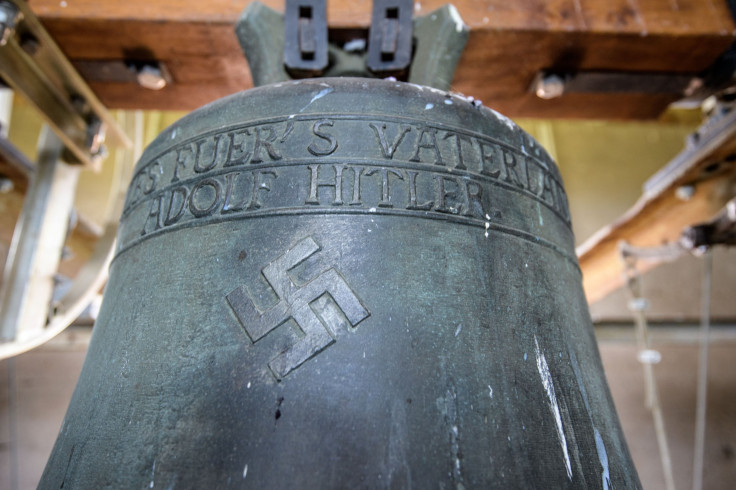Swastika On Nazi Church Bell Anonymously Removed For 'Spring Cleaning 2018'

A swastika and a Nazi-era inscription on a church bell were removed anonymously following widespread debate about the controversial relic. A Lutheran church in the northern German city of Schweringen said Tuesday a note was left on the their door claiming responsibility for the action.
The anonymous note said they wanted to clean the bell of “the filth of the National Socialists” and that the move was aimed at preventing a town “split.” Germany has seen several controversies and debates over the presence of remnants of the Nazi era, such as bells.
“It's time for a spring cleaning that will bring a fresh breeze to our village. We have not only cleaned our village, but also the bell — from pigeon brood and the filth of National Socialism, which, 80 years later, threatened to divide the residents of the village,” the letter read.
The Schweringen church pastor, Axel Hellwege, found last Thursday the swastika, the symbol of Adolf Hitler's National Socialist party, was removed from the bell. The regional Lutheran parish of Balge said in the statement Tuesday the phrase accompanying the swastika, “this cross provides success and conquers discord,” had also been wiped off.
He added “an unknown person entered the church with a key — there was no sign of a break-in.”
Talking about the Schweringen's bell, Hellwege said the debate over the Nazi symbol had posed an “unprecedented challenge to the people in the church.”
Photos of the note, which came with the heading “Spring cleaning 2018,” were published by local newspaper Die Harke.
The Schweringen bell gained popularity after another town, Herxheim, faced controversy surrounding its so-called “Hitler bell,” which had a swastika and the words “All for the Fatherland - Adolf Hitler” embossed on it.
In February, the town decided the controversial church bell will remain as “an impetus for reconciliation and a memorial against violence and injustice.” Following this, the debate began on how Germany should handle Nazi imagery and symbols in the 21st Century.
© Copyright IBTimes 2024. All rights reserved.











